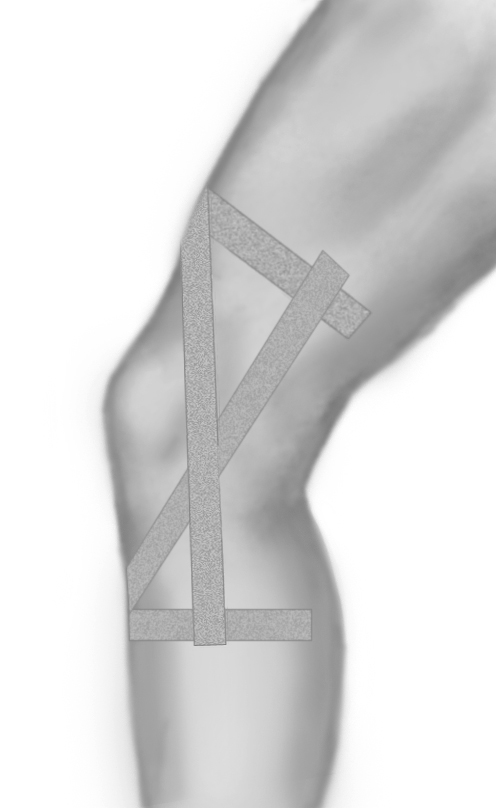PURPOSE: Stabilise the knee joint against excessive lateral twisting (especially valgus twisting) without impairing normal knee movement. The tape is initially used all day and is gradually reduced over the following 3 months. Finally, the tape is only used for particularly risky loads.

TAPING: During tape application, keep the knee slightly bent (about 20 degrees of flexion). Rotation of the knee should be avoided. The easiest way to do this is to apply the tape on a standing patient with the leg to be taped on an elevation of about 10-15 cm and the knee bent over the toes. Approximately 10 cm above the joint line and 10 cm below the joint line on the thigh and lower leg respectively, place two anchors (A and B). These should be open at the back. From the anchor on the thigh, apply a supportive tape (C). It starts at the centre of the inner thigh and follows the length of the thigh downwards, continuing the direction down to the lower leg where, due to the bending of the knee, it will go forward on the front, and is attached to the anchor here.
From the anchor on the lower leg, apply a supportive tape (D). It starts in the centre of the inside of the lower leg and follows the length of the lower leg upwards, continuing the direction up the thigh, where, due to the bending of the knee, it will move to the front and is attached to the anchor here. These two supportive tape strips will now cross each other exactly in line with the joint line, allowing for acceptable knee mobility. A third supportive tape can be placed between the other two. Finally, finish with 2 more tape strips on top of the ‘anchors’ A and B.
